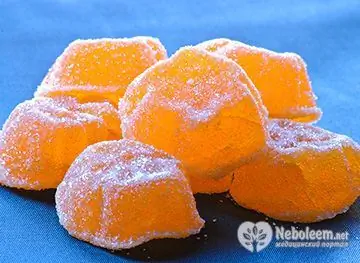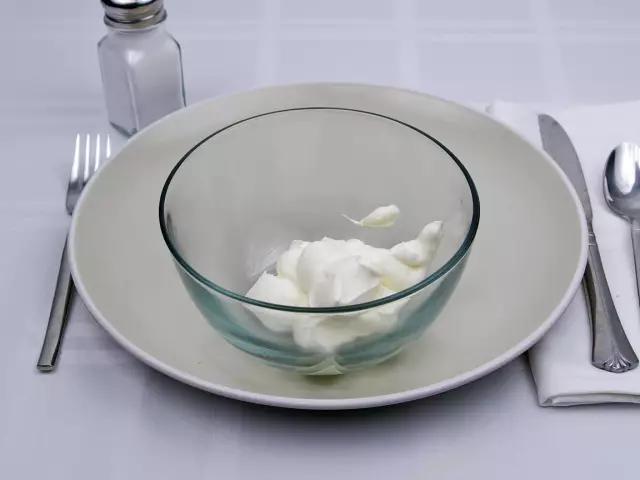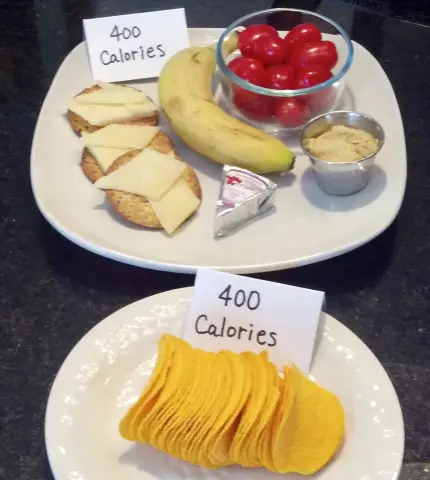- Author Rachel Wainwright [email protected].
- Public 2023-12-15 07:39.
- Last modified 2025-11-02 20:14.
Swede
Rutabaga is a biennial plant of the cabbage family. After planting, in the first year, a rosette of leaves and a root grow, and in the second year, flowers and fruits (polyspermous pods). In the second year, the root becomes oval and large, its pulp is yellow-orange or white. There is a theory that the rutabaga vegetable was developed as a result of crossing turnip and white cabbage.
The ratio of BJU in the product

Source: depositphotos.com How to burn 37 kcal?
| Walking | 9 minutes |
| Jogging | 4 minutes |
| Swimming | 3 min. |
| A bike | 5 minutes. |
| Aerobics | 7 minutes |
| Household chores | 12 minutes |
Useful properties of swede
Rutabaga contains many vitamins, minerals, sugars, fiber, proteins, pectins, and essential oil. This vegetable contains a large amount of ascorbic acid (vitamin C), and it is preserved during prolonged storage and heat treatment (even in boiling water). Also, the vegetable rutabagus contains B vitamins, carotene (provitamin A), vitamin P.
There is a large amount of calcium trace element in the swede, therefore it is indicated for use by patients with osteoporosis. It also contains magnesium, sulfur, phosphorus, iron, copper, potassium and sodium. Given the rich vitamin and mineral composition, the use of this vegetable is recommended for hypovitaminosis, especially in winter and early spring.
The calorie content of swede is low (only 37 kcal per 100 g).
In Russian folk medicine, rutabaga has been used for a long time, several centuries ago it was used for colds. This is quite rational, since the rich content of ascorbic acid stimulates the immune system. It is also known to use swede seeds to treat measles in children.
The vegetable rutabaga is a valuable food product, it is used for constipation, it is recommended to include in the diet of patients with cardiovascular diseases. The diuretic property of swede has been known for a long time, and is used in the treatment of edema of various origins.
Eating swede in food helps to normalize metabolism, reduce blood cholesterol (which is deposited in the vessels and forms atherosclerotic plaques). Therefore, with atherosclerosis, it is recommended to include rutabagas in the diet.
Rutabaga also has a mucolytic effect, that is, it contributes to the thinning of sputum and the appearance of a productive cough. This vegetable perfectly helps with chronic inflammatory lung diseases (chronic bronchitis, bronchial asthma, bronchopneumonia).
Recipe for rutabaga honey juice for cough treatment: One medium-sized rutabaga is peeled, minced in a meat grinder, and mixed with honey in a 2: 1 ratio. Take the mixture 1 dessert spoon 4 times a day with plenty of water, regardless of the meal.
Swede juice is an excellent wound healing and anti-burn agent, since it contains phytoncides, which have a strong antimicrobial effect. Applying rutabaga gruel to purulent wounds helps to cleanse and heal them. In addition, fresh swede juice is indicated for the treatment of iron deficiency anemia, as it contains a large amount of iron.
The anti-inflammatory properties of rutabagas are also known, therefore rinsing the oral cavity with its juice for inflammatory diseases has been used for a long time and give a good effect.

The swede contains sulforane, which helps to eliminate toxic substances from the body and has an anticarcinogenic effect.
Rutabaga also enhances intestinal peristaltic contractions, improves digestion, normalizes metabolism, so it is very useful for obesity. And the low calorie content of swede in combination with a rich vitamin composition make it indispensable in the fight against excess weight.
Rutabaga is a hypoallergenic product (that is, its ability to cause allergic reactions is low), so it can be included in the diet of young children.
For chronic constipation, it is better to use only rutabaga juice, as it has a milder effect.
Swede is contraindicated in acute diseases of the gastrointestinal tract.
YouTube video related to the article:
Found a mistake in the text? Select it and press Ctrl + Enter.






